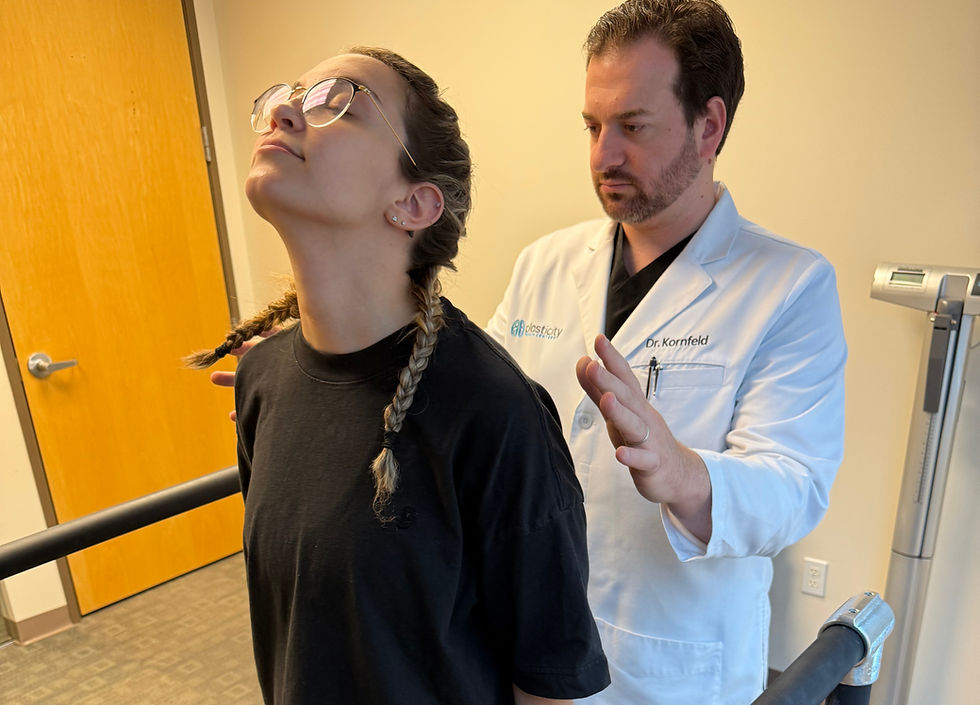How Can Posturography Help Patients Regain Balance and Confidence?
- Plasticity Brain Centers
- Aug 27
- 3 min read
Updated: Sep 15
Finding balance in daily life is something most of us take for granted—until it’s gone. Whether due to concussion, vestibular disorders, neurodegenerative conditions, or even persistent dizziness, instability can make ordinary tasks feel overwhelming. That’s where posturography comes in.

At Plasticity® Brain Centers, we use Comprehensive Assessment of Postural Systems (CAPS®) technology to measure and understand balance with unmatched sensitivity. This allows us to uncover the why behind a patient’s instability and, more importantly, design personalized therapies that restore confidence and control.
What Is Posturography?

In simple terms, posturography is a way of measuring how well you can maintain balance under different conditions. Using a self-leveling force platform, accurate to 0.1 mm, CAPS® detects the smallest shifts in your posture and stability. These measurements give us a window into how your brain integrates information from your:
Vestibular system (your inner ear’s balance center)
Vision (how your eyes help orient your body)
Proprioception (your body’s ability to sense where it is in space)
Together, these systems tell your brainstem how to keep you upright and steady. When one or more of these inputs is “off,” imbalance shows up in your everyday life—sometimes as dizziness, clumsiness, or even fatigue. Learn more about posturography here.
How Does the CAPS® Test Work?
During a CAPS® assessment, patients complete ten short trials, each lasting about 25 seconds. Some of these tests are:
Standing with eyes open or closed
Standing on solid ground versus a foam pad
Subtle head tilts or movements
Calculations or tasks while maintaining posture
These variations challenge different sensory systems. For example, if your balance is fine with eyes open but unstable when they’re closed, it suggests your brain is relying too heavily on vision rather than vestibular or proprioceptive input.

Why Is Posturography So Helpful?
Posturography isn’t just about numbers—it’s about answers. Patients often arrive at Plasticity Brain Centers after months or years of struggling with unexplained dizziness or imbalance. Posturography helps by:
Identifying the root cause – pinpointing whether vision, vestibular input, or proprioception is most affected.
Guiding individualized therapy – directing us toward exercises, vestibular rehabilitation, or coordination training tailored to your needs.
Tracking progress over time – giving patients visible proof that their hard work is paying off.
Restoring confidence – when patients see their balance scores improve, daily activities like walking in crowds, driving, or even standing in line feel less daunting.
In many cases, this data informs how we combine therapies such as eye-movement training, vestibular rehabilitation, or even hand-eye coordination therapy into a comprehensive care plan.
Posturography and Brain Health Go Hand in Hand

Balance issues don’t exist in isolation—they’re often symptoms of a deeper neurological imbalance. That’s why we combine posturography with other brain-based therapies.
For instance, in our recent blog on how photobiomodulation helps ease Mal de Débarquement symptoms, we explored how light therapy can calm neural overactivity. When paired with the diagnostic insights from posturography, therapies like these create a clearer roadmap to recovery.
The Takeaway
Posturography transforms something invisible—like the tiny shifts in your balance—into data that can be measured, understood, and improved upon. For patients, that means hope. It means answers. And it means a return to confidence in everyday life.
If you’re curious about how balance testing can uncover what’s really holding you back, learn more about posturography at Plasticity Brain Centers.
And if you’d like to see how other therapies support balance and neurological recovery, don’t miss our blog on photobiomodulation and Mal de Débarquement. Together, these tools show how innovative, brain-first care can help you regain your footing—literally and figuratively.


